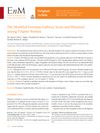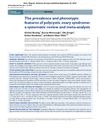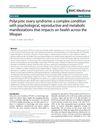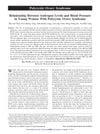The Role of High Serum Uric Acid Levels in Androgenic and Non-Androgenic Polycystic Ovarian Syndrome Patients
October 2021
in “
Clinical Epidemiology and Global Health
”
androgenic PCOS non-androgenic PCOS hyperuricemia total testosterone sex hormone binding globulins SHBG HOMA-IR LDL HbA1C FPG FSI obesity hypertension cardiovascular risk TG TC androgenic polycystic ovarian syndrome non-androgenic polycystic ovarian syndrome high uric acid testosterone insulin resistance low-density lipoprotein glycated hemoglobin fasting plasma glucose fasting serum insulin high blood pressure triglycerides total cholesterol
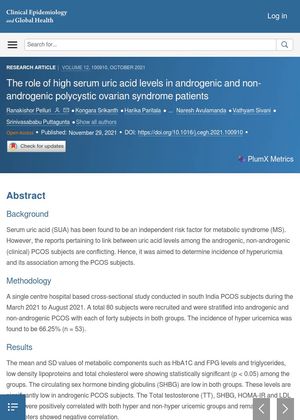
TLDR High uric acid levels are more common in PCOS patients, especially those with androgenic PCOS, and are linked with increased cardiovascular risk and other metabolic issues.
The cross-sectional study conducted in South India from March to August 2021 involved 80 subjects with Polycystic Ovarian Syndrome (PCOS), divided into two groups: androgenic and non-androgenic PCOS. The study found a high incidence of hyperuricemia (66.25%) in PCOS subjects, with a significant association with androgenic PCOS. Both groups showed positive correlations with total testosterone, sex hormone binding globulins (SHBG), HOMA-IR, and LDL levels, while HbA1C, FPG, and FSI showed a negative correlation. Obesity and hypertension were more common in androgenic PCOS patients, increasing cardiovascular risk. High HbA1C levels were found in androgenic PCOS subjects, while FBG and HOMA-IR levels were high in non-androgenic PCOS patients. Androgenic PCOS subjects had significantly higher TG and LDL levels than non-androgenic PCOS subjects. The study concluded that metabolic components such as HbA1C, FPG levels, and TG, LDL, and TC are significantly associated with androgenic PCOS.
